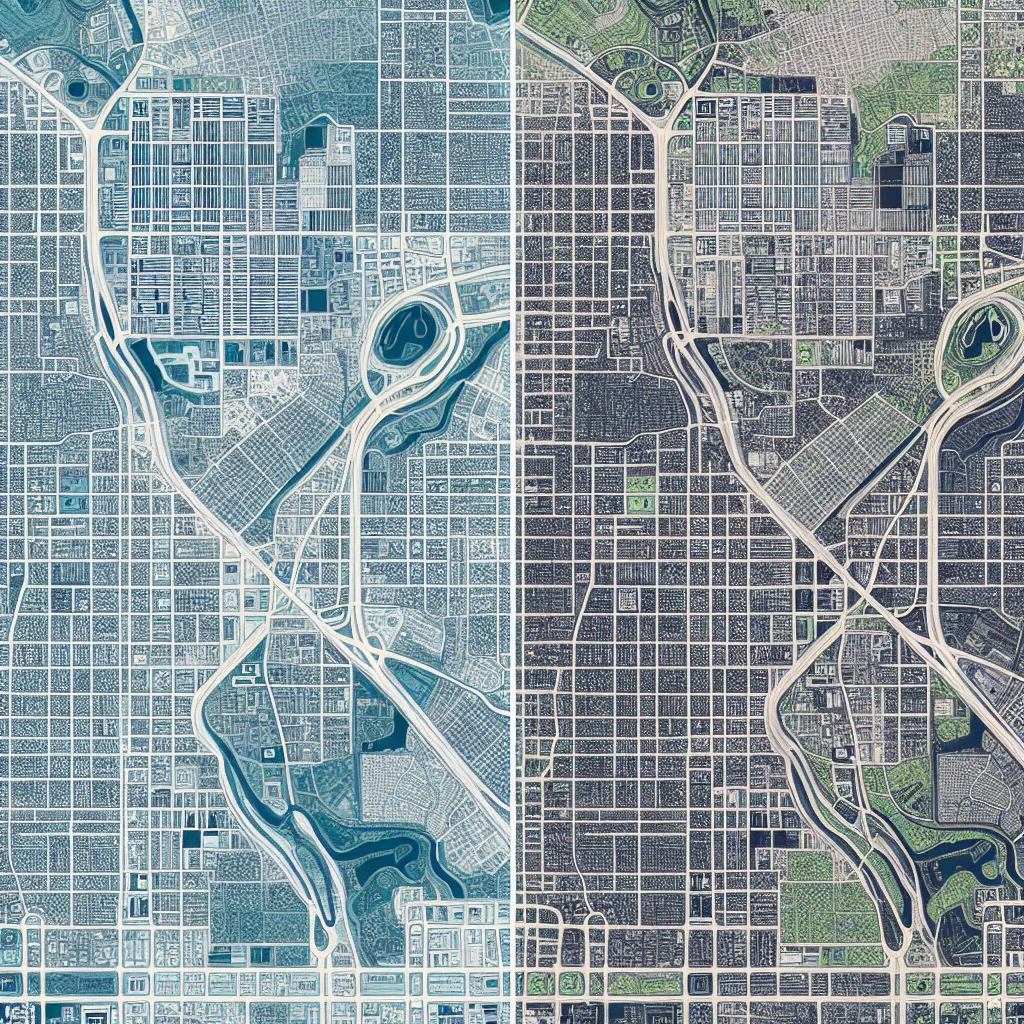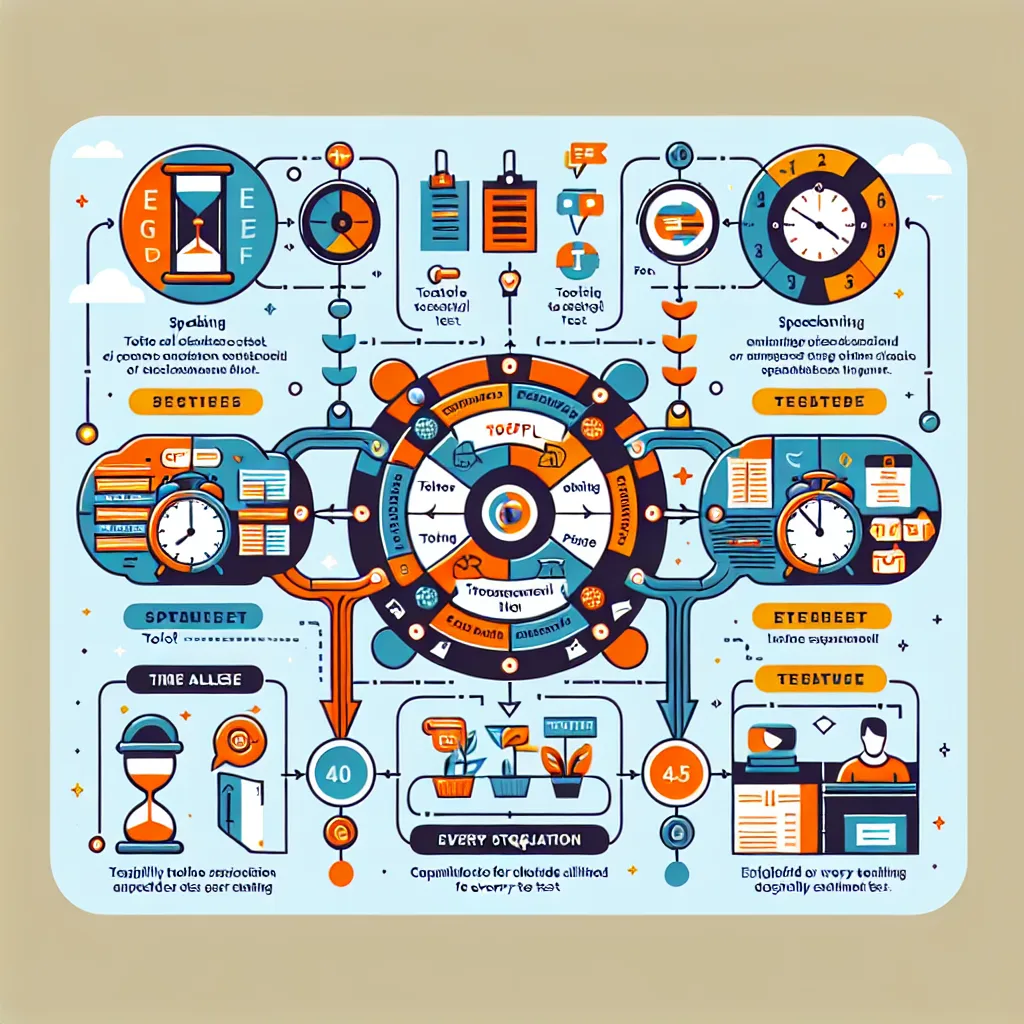Are you preparing for the TOEFL exam and feeling anxious about the map description task in Writing Section 1? Don’t worry! This comprehensive guide will walk you through the process of effectively describing maps in TOEFL Writing Task 1, providing you with valuable tips, strategies, and examples to boost your confidence and improve your performance.
Understanding the TOEFL Writing Task 1 Map Description
The TOEFL Writing Task 1 often includes a map description question, which requires test-takers to analyze and describe changes or comparisons between two maps. This task assesses your ability to:
- Interpret visual information
- Identify key features and changes
- Organize information logically
- Use appropriate vocabulary and grammar
Understanding the requirements of this task is crucial for achieving a high score in the TOEFL Writing section.
 TOEFL Writing Task 1 Map Example
TOEFL Writing Task 1 Map Example
Essential Steps for Describing Maps in TOEFL Writing Task 1
1. Analyze the Maps Carefully
Before you start writing, take a few minutes to carefully examine both maps. Look for:
- The time periods represented
- Major changes or differences between the maps
- Key features such as buildings, roads, natural landmarks, etc.
- Any symbols or legends provided
2. Plan Your Response
Organize your thoughts and create a brief outline. Your response should typically include:
- An introduction summarizing the maps
- 2-3 body paragraphs discussing the main changes or differences
- A conclusion summarizing the overall transformation
3. Write a Clear Introduction
Begin your response with a concise introduction that:
- Paraphrases the question
- Provides an overview of the maps
- Mentions the time periods represented
Example:
“The two maps illustrate the changes that occurred in the town of Meadowville between 1995 and 2020. Over this 25-year period, the town underwent significant development and urbanization.”
4. Describe the Main Changes
In your body paragraphs, focus on the most significant changes or differences between the maps. Use specific details and examples to support your observations.
- Group similar changes together
- Use appropriate transition words to connect ideas
- Quantify changes when possible (e.g., “The number of houses increased from 10 to 50”)
Example:
“One of the most notable changes is the expansion of residential areas. In 1995, there were only a few houses along Main Street, but by 2020, several new housing developments had been constructed in the eastern and western parts of the town.”
5. Use Appropriate Vocabulary and Structures
Employ a variety of vocabulary and grammatical structures to describe the maps effectively:
- Location vocabulary: north, south, east, west, central, peripheral
- Change vocabulary: increase, decrease, expand, reduce, transform
- Comparison language: whereas, while, in contrast, compared to
- Passive voice: “A new shopping center was built in the town center”
6. Provide an Overview in the Conclusion
Conclude your response by summarizing the overall transformation depicted in the maps:
- Restate the main changes
- Provide a general assessment of the development
Example:
“In conclusion, the maps reveal that Meadowville underwent significant urbanization between 1995 and 2020, with major expansions in residential areas, commercial facilities, and transportation infrastructure.”
Common Pitfalls to Avoid
When describing maps in TOEFL Writing Task 1, be careful to avoid these common mistakes:
- Spending too much time on minor details
- Failing to group similar changes together
- Using repetitive language or structures
- Neglecting to provide an overview of the changes
- Inserting personal opinions or speculations
Practice and Improvement Strategies
To excel in describing maps for TOEFL Writing Task 1:
- Practice with various map types and topics
- Time yourself to ensure you can complete the task within the allotted 20 minutes
- Review sample responses and analyze their structure and language use
- Build your vocabulary related to urban development, geography, and change
- Seek feedback from teachers or study partners on your practice responses
 TOEFL Writing Practice Session
TOEFL Writing Practice Session
Conclusion
Mastering the art of describing maps in TOEFL Writing Task 1 requires practice, attention to detail, and effective use of language. By following the steps outlined in this guide and consistently practicing with various map types, you’ll be well-prepared to tackle this challenging task on test day. Remember to stay calm, analyze the maps carefully, and structure your response logically. With dedication and the right approach, you can confidently showcase your map description skills and boost your TOEFL Writing score.
[internal_links]




